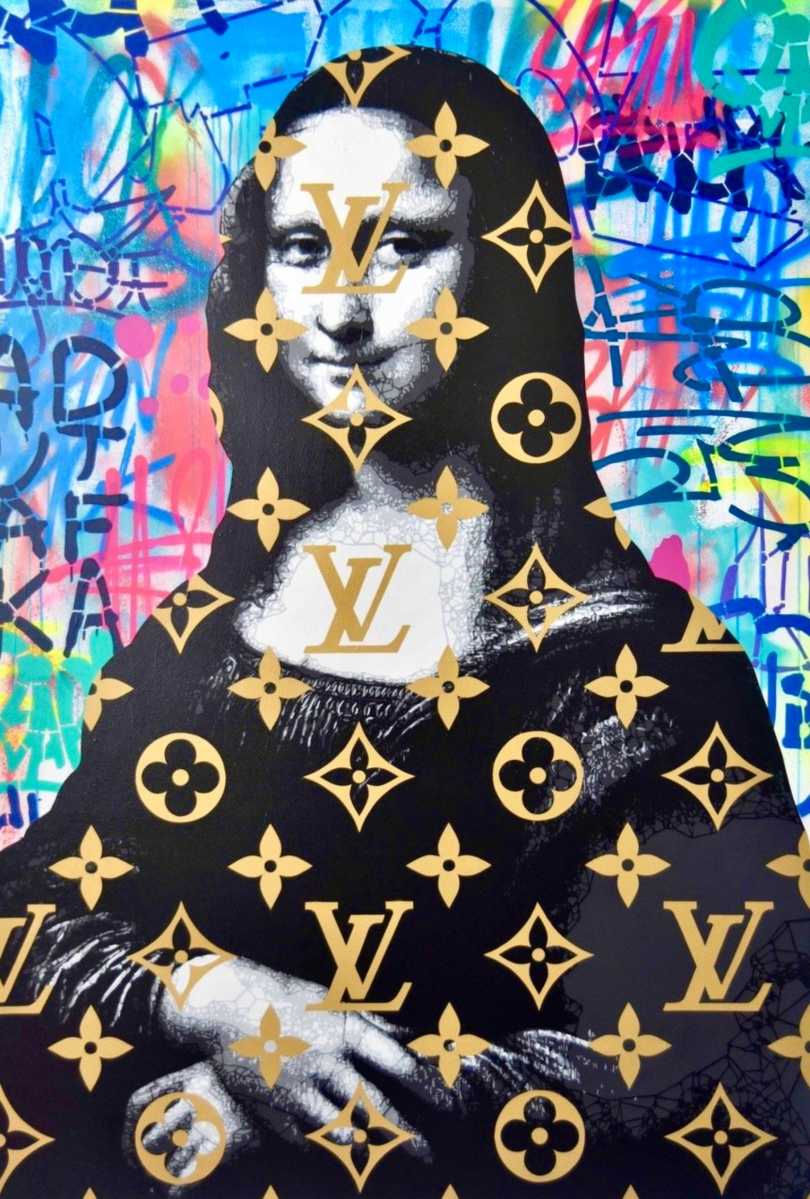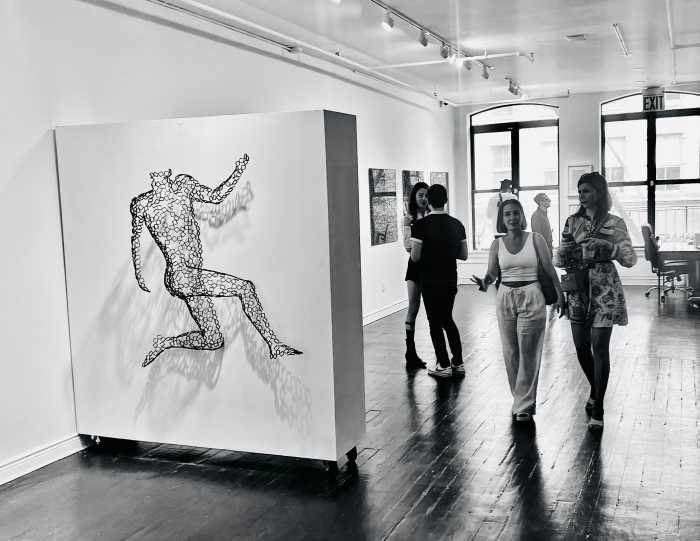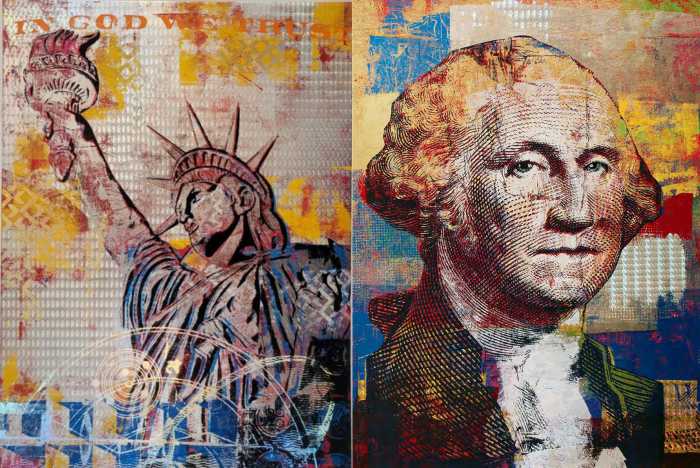Leonardo da Vinci’s “Mona Lisa” has long held an unparalleled position in the annals of art history, her enigmatic smile and inscrutable gaze captivating audiences for centuries. Beyond her aesthetic appeal, the “Mona Lisa” epitomizes the enduring power and mystique of women.
In today’s dynamic art market, contemporary artists have reinterpreted this iconic figure, infusing her with new life and relevance. This is further materialized through the visions of three distinct, modern artists — Mr. Brainwash, Campbell La Pun, and R.T. Houben — whose reinterpretations of the “Mona Lisa” reveal their distinct artistic approaches, while providing insightful commentary on the lasting impact of women and the perpetual importance of art.
Mr. Brainwash: The Pop Art Revolution
Thierry Guetta, better known as Mr. Brainwash, brings a vibrant and eclectic perspective to the “Mona Lisa.” Renowned for his exuberant blend of pop culture and street art, Mr. Brainwash transforms the classical icon into a contemporary muse. His interpretations are a kaleidoscope of modernity, interweaving graffiti, celebrity imagery, and iconic symbols into the fabric of the “Mona Lisa.”
In Mr. Brainwash’s hands, the “Mona Lisa” transcends time, becoming a universal symbol of femininity and resilience. His work highlights the enduring power of women and cultural prowess ( not to mention humor), positioning the “Mona Lisa” as a dynamic, living presence in today’s cultural landscape. Through his reimagining, Mr. Brainwash bridges the past and present, demonstrating how classical art can resonate with modern audiences and affirming the continuous relevance of historical icons.
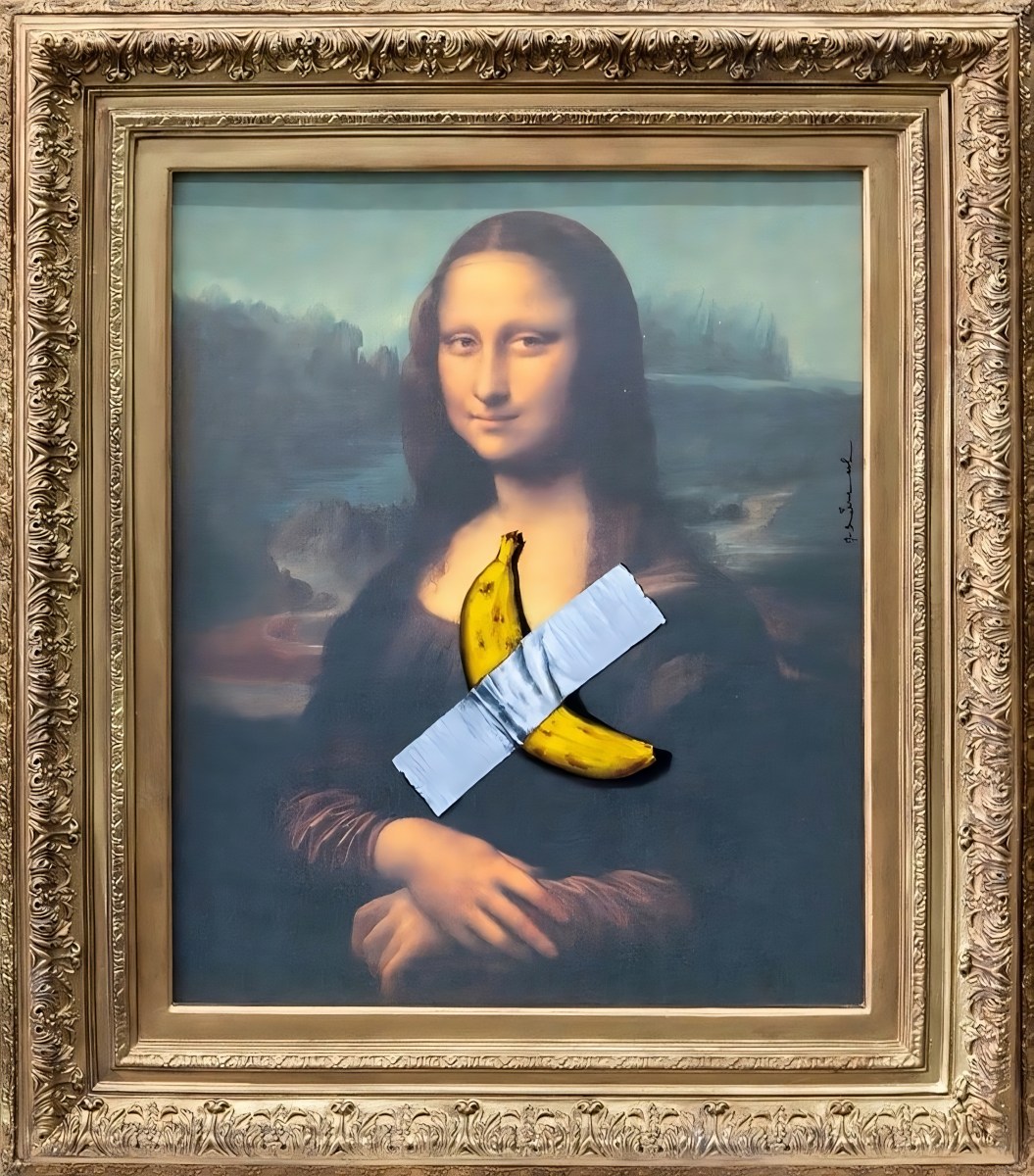
Campbell La Pun: The Intersection of Luxury and Iconography
Campbell La Pun, known for his luxurious pop art creations, offers a sophisticated reinterpretation of the “Mona Lisa.” His works often feature high-end brands and fashion elements, merging them with classical imagery to explore the intersection of art, luxury, and identity. In La Pun’s vision, the “Mona Lisa” is adorned with designer logos and contemporary fashion, transforming her into a symbol of modern sophistication and status.
La Pun’s reimagining delves into the commodification of art and the evolving perception of female power in society. His “Mona Lisa” is not merely a timeless icon but a contemporary figure navigating the worlds of fashion and luxury. Through this lens, La Pun underscores the allure and influence of modern women, highlighting their ability to redefine cultural narratives and assert their presence in diverse arenas. His work reaffirms the persistent relevance of the “Mona Lisa” and her capacity to symbolize the dynamic intersection of art and life.
R.T. Houben: The Digital Renaissance
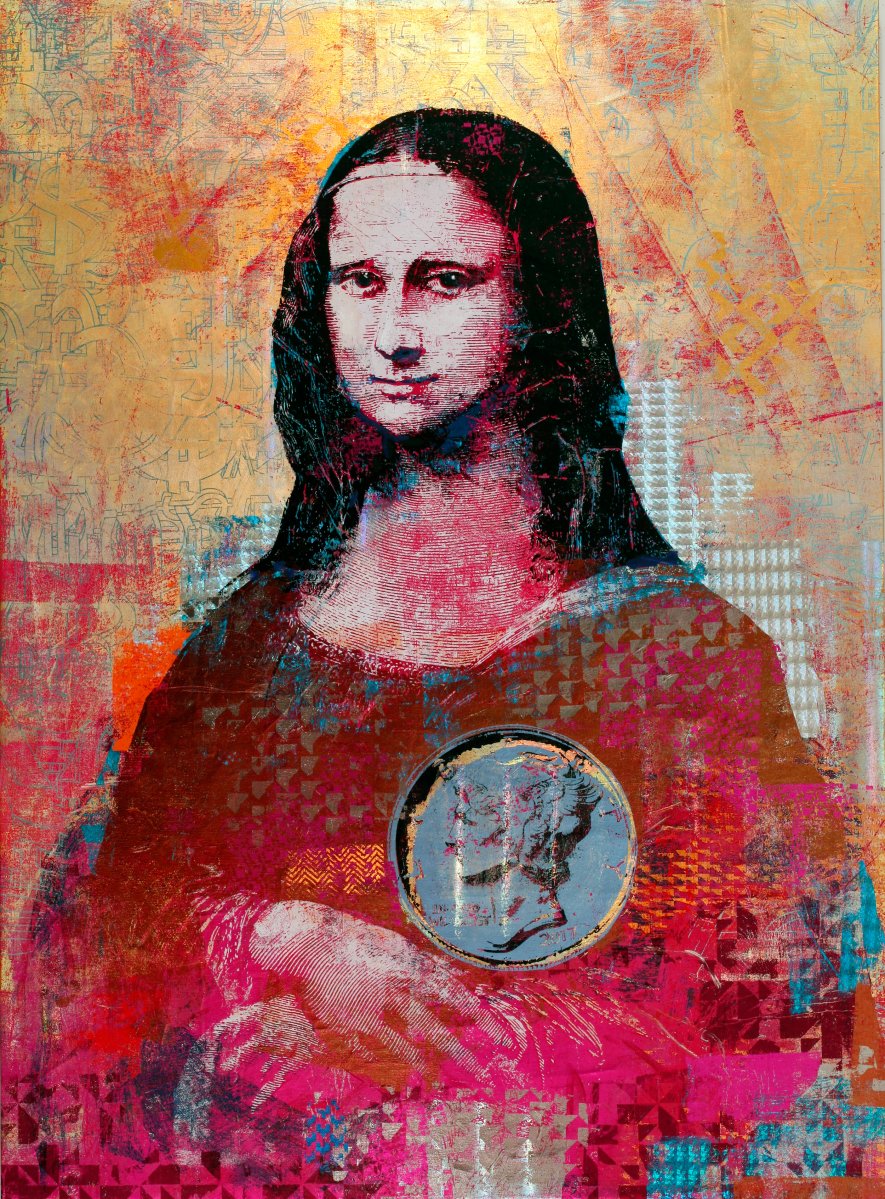
R.T. Houben, an artist renowned for blending classical techniques with digital innovation, presents a striking reinterpretation of the “Mona Lisa.” Houben’s meticulous attention to detail and deep understanding of historical art forms are elevated through digital technology and currency—resulting in a visually compelling fusion of past and present. His “Mona Lisa” incorporates elements of glitch art and digital manipulation, creating a contemporary masterpiece that speaks to the transformative power of technology.
Houben’s reimagining explores the impact of the digital age on art and society, positioning the “Mona Lisa” as a symbol of resilience and adaptability. By integrating digital elements into the classical portrait, he reflects on the evolving nature of female power in a technological world. Houben’s work emphasizes the continuous relevance of the “Mona Lisa,” demonstrating how art can adapt to changing times while maintaining its core essence and significance.
The enduring legacy
The “Mona Lisa” remains a powerful testament to the relentless power and allure of women. Her presence in the modern art market, as reimagined by artists like Mr. Brainwash, Campbell La Pun, and R.T. Houben, highlights the enduring significance of art and its capacity to reflect and shape societal values. Each artist, through their unique vision, contributes to an ongoing dialogue about the role of women in art and society, ensuring that the “Mona Lisa” continues to inspire and challenge audiences across generations.
In a world where art serves as both a mirror and a beacon, the reimagined “Mona Lisa” stands as a testament to the timeless essence of femininity and the enduring impact of women. Through these contemporary interpretations, we are reminded of the lasting legacy of the “Mona Lisa” and the powerful role of art in capturing the complexities and nuances of human experience.
Ready to explore the visions of Mona Lisa in modernity? Visit DTR Modern Soho and follow dtrmodern.com for further information.
Read More: https://www.amny.com/new-york/manhattan/the-villager/



